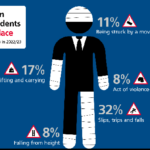A spinal cord injury (SCI) is a major event in a person’s life that causes changes in their body, mind, and social life. The mental, emotional, and social effects of a spinal cord injury are very different for each person; time, place, cultural, and environmental factors all play a vital role.
Rehabilitation healthcare workers should know about the most common mental health issues and symptoms that come with having a SCI, as well as how to get the most out of their rehabilitation and improve their quality of life.
Have you ever wondered what it is like to live with a spinal cord injury? The podcast “This is Spinal Crap” delves headfirst into the world of spinal cord injuries, providing both information and entertainment. Not only will you hear personal stories, but you’ll also learn great tips for staying healthy and living your best life, regardless of your abilities.
The spinal cord and mental health
Physical therapists and rehabilitation psychologists collaborate to assist people with SCI with their mental and social health on a variety of levels. This includes helping with normal adaptation, which includes dealing with feelings and learning new ways to behave, as well as diagnosing and treating mental health problems that might come up and get in the way of recovery.
It is important to take into account each person’s cultural and personal values when working on health-related behaviors and areas of functioning. This will help with rehabilitation and the general quality of life.
Psychological Adaptation
A spinal cord injury (SCI) drastically changes one’s life, both internally and externally. Grief, uncertainty, and shifts in cognitive processes are all part of the normal process of adapting. About 60% of those with spinal cord injuries adjust well to their injuries and report leading happy, purposeful lives. Optimism, self-esteem, support networks, problem-solving abilities, and spirituality facilitate resilience. Particularly throughout recovery, resilience and grief can coexist.
Sometimes perceived as unrealistic, hope fosters psychological adaptability, coping, and resilience. Health professionals ought to help people deal with their grief and move toward a good quality of life after an injury. They should be able to identify and respect their patients’ values and beliefs while providing the right advice.
Anxiety, PTSD, and depression
If you have a severe spinal cord injury (SCI), you may be more likely to have mental health problems like PTSD, anxiety, and depression. Clinical sadness affects about 22% to 28% of people with SCI, whereas anxiety affects about 20%. About 12% of people who get it suffer from PTSD.
Most people with SCI, however, adjust effectively and do not go through clinical anguish. After an injury, providers should evaluate and track mood and psychological distress, since untreated mental health issues can affect pain levels, self-management, achieving goals during rehabilitation, hospital stay length, general health, and life satisfaction. Cooperation between psychiatry and psychology can enhance the results of patient treatment.
Self-harm and suicide
Pre- and post-spinal cord injury (SCI) factors increase the suicide risk in SCI patients compared to the general population. An estimated 4–11% of deaths following SCI result from suicide. Though it is important, suicide assessment practitioners need to be conscious of possible prejudices associated with disability and suicide. In addition, healthcare professionals should think about the resources and settings—such as beds, equipment, personnel, and medical care—that can accommodate individuals with SCI.
Head trauma and cognitive impairment can affect rehabilitation and quality of life (QOL). Common causes include anoxia, cerebral vascular accidents, dementia, polypharmacy, and psychological discomfort. SCI is one risk factor for dementia resulting from neurodegeneration. Patients with physical limitations may need adjustments to their usual testing procedures.
Intimacy and sexual relationships
SCI has primary, secondary, and tertiary consequences that can profoundly affect sexuality, enjoyment, and personal relationships. Partners of people with SCI frequently have to adjust to new responsibilities, care requirements, social interactions, and levels of emotional and sexual intimacy. Using cultural humility to understand disability identity and lived experiences better can increase intimacy and support.
Erectile dysfunction, penile sensitivity, and hypogonadism are among the primary impacts of SCI on sexual functioning; more disruptive secondary symptoms include discomfort and changes in body image. Psychological elements, such as shifts in sexual self-esteem and intimacy anxiety, also have an impact on sexual well-being.
Intimate partner violence
Some people can experience SCI, disability, and intimate partner violence (IPV). For example, some may need caregiver assistance for everyday living, mobility, and medication administration. Healthcare professionals should assess and address IPV and understand the subtleties that may emerge when combining SCI and IPV.
Pain, sleep disorders, drug abuse, physical activity, and diet are examples of behavioral health issues that can have a detrimental impact on a patient’s desire for rehabilitation. This can raise the risk of psychological distress and a decline in quality of life (QOL) after a spinal cord injury (SCI). People with SCI frequently experience chronic pain, with prevalence rates ranging from 65 to 85%.
We can lower rehabilitation engagement barriers and maximize patient outcomes by addressing co-occurring behavioral health issues such as substance abuse, chronic pain, sleep disorders, diet, and exercise.
Mental health and tramadol
It is preferable to treat the injury itself before attempting to treat the mental health of a person who has suffered a spinal cord injury. Any mental health activity will be of little value if the patient is experiencing acute pain. The use of tramadol can be of great assistance in alleviating the pain associated with spinal cord injuries.
Researchers have conducted numerous studies to observe the effects of tramadol on patients and their ability to manage pain from spinal cord injuries. When taking tramadol, one should exercise caution because the medication can induce adverse effects such as nausea, constipation, and dizziness. These side effects can irritate and interfere with one’s ability to carry out everyday tasks.
Tramadol with Other Medicines
You should avoid taking Tramadol with codeine-containing painkillers like co-codamol, Nurofen Plus, or Solpadeine, but you can take it with paracetamol, ibuprofen, or aspirin. If you have ever had an allergic response to tramadol, had seizures, fits, head injuries, alcohol or drug addiction, breathing issues, kidney or liver problems, or experienced reactions to other strong painkillers, let your doctor or pharmacist know before you start using tramadol.
Dosages vary depending on personal tolerance, degree of discomfort, past painkiller reactions, and adverse effects. Sometimes, the doctor may have to change the dose more than once to get the right amount. You can buy Tramadol overnight, as it has shown promise in pain relief studies, but always talk to a doctor before taking it.
Ultimately, all of these medications and workouts are merely a means of assisting and curing your injury; however, the true source of strength lies within the individuals themselves. No matter how bad things are, miracles have happened to people who don’t give up the light inside them.


